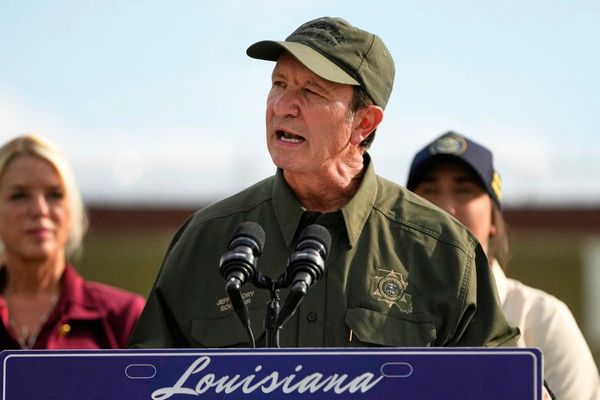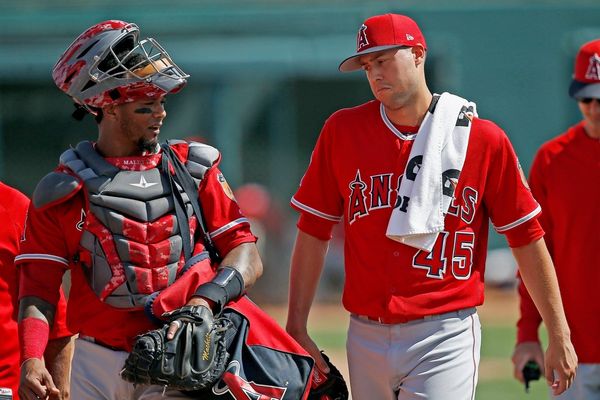“Listen, here’s the thing. If you can’t spot the sucker in the first half hour at the table, then you ARE the sucker.” — Matt Damon as Mike McDermott, “Rounders”
One of the ways the NFL’s better personnel people are able to stay above the fray is the ability to identify and exploit other personnel people who are not quite as good at their jobs, and do not have as adept an understanding of player value. It’s a Moneyball asset in that the main point of the Moneyball doctrine is to pick out market inefficiencies and turn them into wins for your organization.
Over the last few months, few NFL personnel people have done this better than Seahawks general manager John Schneider. Last October, in concert with head coach and shot-caller Pete Carroll, Schneider managed to turn a 2020 third-round pick and edge-rushers Barkevious Mingo and Jacob Martin into half a season of Jadeveon Clowney. He then sent a 2020 fifth-round pick to the Lions for safety Quandre Diggs, and somehow got a seventh-round pick in the deal.
And as free agency was happening this month, the Seahawks sent another fifth-round pick to the Redskins for cornerback Quinton Dunbar. That’s three major talents for a relative pittance in draft and player capital. Not that you’re going to get any awards for out-thinking Houston head coach/GM Bill O’Brien, Lions head coach Matt Patricia, and the current structure of the Redskins’ front office, but Schneider wasn’t looking for awards. He was looking for better players.

Part of the reason Clowney was available is his current free-agent status; he was under club control through the 2019 season and the Seahawks may or may not be able to afford to bring him back. But in Diggs, Seattle got the game-changing safety they hadn’t had since Earl Thomas was both healthy and not playing for the Ravens. Diggs is under contract for the next two seasons at cap hits of $5,168,750 (2020) and $5.5 million (2021). Dunbar is on the books for a 2020 cap hit of $3,421,875, and then, he’ll be a free agent. But in the meantime, assuming as we currently can’t that there is a full 2020 season or a reasonable facsimile, the Seahawks got a full season of one of the NFL’s ten best cornerbacks for next to nothing.
Both players fill massive holes in the former “Legion of Boom” defense that had the rest of the league on blast when Sherman and Thomas were patrolling its back four. The same team that led the league in points allowed in four straight seasons (2012-2015), something that had never been done in the post-merger era, finished 22nd in points allowed in 2019, and that number would have been worse without the Diggs acquisition.
As important as Diggs is to the equation, Dunbar might be the bigger steal. An undrafted former receiver out of Florida, Dunbar was a middling defender through his first four seasons in the league. In 2019, even with an unimpressive group of secondary talent around him, Dunbar had his breakthrough season. He also asked for a new contract, which led to the schism that led to the trade.
Unless you were studying Dunbar’s performance last season, it may have slipped by you.

In a recent study of Dunbar’s potential effectiveness by The Athletic, it was posited that Dunbar did most of his good work against weaker quarterbacks like Daniel Jones of the Giants, Josh Allen of the Bills, Ryan Fitzpatrick and Josh Rosen of the Dolphins, and Kyle Allen of the Panthers. Against quarterbacks such as Philadelphia’s Carson Wentz and New England’s Tom Brady, the article said, Dunbar didn’t perform as well.
Watching the full tape of Washington’s 33-7 Week 5 loss to the Patriots, in which it was claimed that Dunbar allowed six receptions on eight targets for 90 yards, is a fascinating exercise in how tape and advanced metrics are frequently divergent entities, especially when it comes to pass coverage. The worst play in which Dunbar was involved was this 31-yard completion from Tom Brady to Julian Edelman. Dunbar (No. 23) has to follow Edelman in man coverage, and Edelman beats him on the crossing route.

That miss is entirely on Dunbar, but would you, as a defensive coordinator, draw up a play in which a 6-foot-2, 202-pound cornerback was following a 5-foot-10, 198-pound slot receiver who’s expert at timing up with his quarterback on short and intermediate routes with a cow pasture behind him? Perhaps not.
The second-worst play in which Dunbar was involved was this 24-yard play from Brady to Josh Gordon.

There are obvious pre-snap communication issues here — both Dunbar and safety Montae Nicholson (No. 35) are trying to get everyone on the same page. Gordon (No. 10) leans into the gap provided by Nicholson’s deep drop, and it’s off to the races. It’s difficult to know without asking coaches and players, but we’re going to go ahead and guess this wasn’t the prescribed coverage. It could be that Nicholson was calling for Quarters or two-deep coverage, and safety Landon Collins (No. 20) was waving him off, setting Nicholson on a deep-third path. This would obviously affect Dunbar’s coverage responsibility.
Washington had all kinds of schematic breakdowns in their coverage last season; it’s one reason the Redskins finished 24th in Football Outsiders’ opponent-adjusted pass defense metrics, and had the seventh-worst defense in the NFL as rated by Expected Points contributed.
When it comes to cornerbacks, it’s important to evaluate the plays that don’t happen, as well. One example is this incomplete pass from Brady to Gordon in which Dunbar is playing Gordon tight and gets the deflection. Dunbar will be doing a lot of this type of coverage in Seattle’s defense.

Ray Horton, who played defensive back in the NFL from 1983 to 1992, and has been both a defensive backs coach and defensive coordinator in different iterations since 1994, recently told Bob Condotta of the Seattle Times that in Dunbar, the Seahawks are getting what amounts to “a young Richard Sherman.”
“Because of the style of play, the hands, the anticipation, the [being a] former wide receiver, the competitiveness,” Horton, who was the Redskins’ defensive backs coach in 2019, said. “Really, that’s what you are getting is a young Richard Sherman. And this kid is hungry. He wants to be good.’’
Well, the similarity in numbers were interesting in 2019. Though Week 8 of the 2019 season, per Pro Football Focus, both Dunbar and Sherman had allowed an opponent passer rating of 37.9, on the dot. Only New England’s J.C. Jackson (12.2) had a lower opponent rating among cornerbacks taking at least 50% of their team’s defensive snaps. By the end of the regular season, Sherman had allowed 27 receptions on 51 targets for 227 yards, one touchdown, three interceptions and an opponent passer rating of 46.8. Dunbar had allowed 29 receptions on 52 targets for 344 yards, two touchdowns, and four interceptions. 2019 was the year the light came on for Dunbar; for Sherman, that year was 2012, his second season in the league.
“I’ve coached some Hall of Fame players, Pro Bowl players, and as far as cornerbacks, he’s probably one of the smartest guys I’ve had,’’ Horton continued when asked about Dunbar’s diagnostic abilities. “And I think part of that is because he was a wide receiver, so he understands offensive football very well. And what I mean by that is, he understands formations. He would come in on Wednesdays each week, the first day we are back, and as we were watching film he would tell you the route. He would say ‘this is that play and this is that play.’ He understands what he sees so brilliantly.’’
Perhaps the best example of this came in Week 4 against the Giants, when Dunbar intercepted this deep attempt from Daniel Jones to receiver Sterling Shepard (No. 87). Originally, Dunbar is covering receiver Cody Latimer (No. 12) in bail coverage on a deep over route. But he breaks off at the right time with a little ID help from Nicholson, and jumps Shepard’s crossing route for the interception.

Here, assistant defensive backs coach James Rowe breaks this play down, via NBC Sports Washington D.C.
“Dunbar’s a really instinctual guy, and a guy that really studies the game,” Rowe concluded. “I assumed that as soon as he saw that look, knowing that’s a way teams like to attack us, he for sure knew that type of play was coming. He was looking for it, and made a great play for us.”
The play Rowe is talking about against the Cowboys in Week 2 is this 51-yard touchdown pass from Dak Prescott to receiver Devin Smith. But here, it’s cornerback Josh Norman running bail on the weak side, which is, to put it kindly, a downgrade in coverage. It’s a similar over/crosser concept, with a less optimal result for the defense.

But in Dunbar’s case, when your defensive backs coach and your assistant defensive backs coach both go out of their way to specify that you’re a student of the game and can make plays off that work, that’s a pretty good sign.

We already know about the value of Quandre Diggs to Seattle’s secondary. It could be argued that it was even more transformative than Clowney’s on the defensive line.
“I think it was pretty obvious,” Carroll said in his end-of-season press conference regarding Diggs’ impact. “We played cleaner with him. He helped us in a number of ways. I’ll continue to tell you that he’s helping other guys play well. The confidence that he brings in adds to those guys. I thought Bradley [McDougald] played better when he was playing with ‘Q’ [Diggs] in the game. When he is in the game with the younger kids, he’s got to control quite a bit more as opposed to focusing on his play. I think you can see that help. I don’t know if statistically it shows up as much as it felt different when he’s playing.”
It showed up statistically, as well.
One way to quantify Diggs’ effect on the defense is to look at the success rate of routes specifically designed to test the deep third. Sports Info Solutions has this data, and it’s fascinating. From Weeks 1-9, on posts, deep crossers, go routes, hitch-and-go routes, out-and-up routes — anything that would test a secondary deep — the Seahawks allowed five receptions on six catchable targets for 144 yards, one touchdown, and one interception to the middle, right middle, and left middle of the field.
But from Week 10 through the end of the regular season, things got quite a bit better. Neither Diggs nor McDougald were targeted at all on such routes, and the Griffin/Flowers combo was targeted eight times, allowing three receptions for 56 yards, on deep stuff. For the Redskins, Dunbar allowed one catch for 17 yards on five targets in that span, with a dropped interception and a pass defensed. For the entire season, Dunbar allowed just that one completion on 10 total targets on those types of deep routes.
Regarding Diggs, two plays against the Vikings in Week 13 typified the type of pass defense Carroll has always taught — exact and aggressive. At the start of the fourth quarter, Kirk Cousins attempted a short pass to receiver Stefon Diggs, but Flowers (at the bottom of the screen) was having none of it. Diggs is one of the NFL’s best route-runners, and Flowers has been vulnerable to shorter, angular routes through his career, but he “landmarked” Diggs perfectly here, ran the route with him, and came up with the interception.

And here, halfway through the second quarter, Diggs shows his closing speed and ability to negate a play in space as he screams down from his deep safety role to lay the boom on tight end Irv Smith, Jr. for a six-yard gain.

With Diggs on board, this was now a formerly disorganized secondary playing in concert. One could easily argue that his addition to Seattle’s defense created a similar impact to Minkah Fitzpatrick’s in Pittsburgh after a mid-September trade with the Dolphins. Pittsburgh gave up their 2020 first-round pick for Fitzpatrick, and that’s not to say they gave too much — general manager Kevin Colbert and head coach Mike Tomlin would likely tell you they’d make that trade again 100 times over. But the Diggs deal does further the reputation Schneider and Carroll have earned for finding the players who fit their concepts and putting them in the best possible positions to succeed — especially players who have become mysteriously undervalued by their former teams.
At the scouting combine in February, Schneider was very specific about what he wants out of a secondary that was set to regress before Diggs was added to the roster.
“I think just like every position, you’re constantly looking to tweak it and figure out how to get better, whether it’s at strong safety, free safety, you know? Obviously we want to get better. If I told you that we were satisfied with the performance I’d be lying. We all need to get better.”
Adding Diggs last year was a major part of that, and the acquisition of Quinton Dunbar might be the piece that puts the Seahawks’ secondary back in the good-to-great category. Perhaps not what the Legion of Boom was at its peak, but any team would take a reasonable sub-version of that.
More remarkably, the Seahawks created that new secondary with the invaluable skill of spotting the suckers at the table, and taking them for all they’re worth.
Touchdown Wire editor Doug Farrar previously covered football for Yahoo! Sports, Sports Illustrated, Bleacher Report, the Washington Post, and Football Outsiders. His first book, “The Genius of Desperation,” a schematic history of professional football, was published by Triumph Books in 2018 and won the Professional Football Researchers Association’s Nelson Ross Award for “Outstanding recent achievement in pro football research and historiography.”







